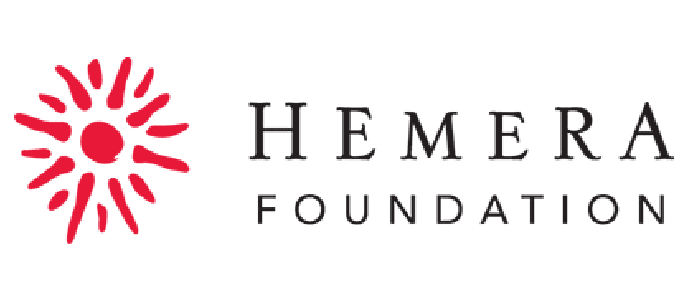2021 Keynote Artists:
Film Screenings: Friday, August 13
5:00 PM MDT at Spangalang Brewery
2736 Welton St, Denver, CO 80205
RedLine presents two films by Pittsburgh, PA based artist Alisha B. Wormsley, and Houston, TX based artist Li Harris. In their films, Children of Nan and Cry of the Third Eye, the filmmakers look to the experiences of Black American motherhood, community, gentrification and notions of abduction and survival. They pull from the genres of science fiction and magical realism to build experimental, multi-dimensional worlds in which to explore these concerns.
Alisha B. Wormsley's film, The Children of Nan, takes place in a dystopic future, where Aditi 34 has only known life underground in a lab where she was created with her three sisters. Their maker, the Scientist, keeps them locked away for their "own safety." Her only connection to the outside world is an archive that gives her insight to how they came to be underground. She and her sisters start to have visions of their mother, NAN and the outside world and even one another in a different life. One by one her sisters begin to disappear and Aditi 34 must escape the lab, go above ground and search through time and space for her sisters and NAN. 39 minutes
Cry of the Third Eye is a new opera film in three acts, that follows the story of a young girl who wonders what’s really going on in the hood as she searches through the redevelopment of historic Third Ward Houston, Texas for her lost dog. This interdisciplinary performance piece touches on identity, gentrification and abduction, and is often presented as a semi-silent short film with live musical narration performed by the writer, composer and director, Lisa E. Harris. This presentation will be of ACT 3: The Last Resort.
HD video, live vocal performance with electronic theremin and sampler, 31 minutes
Untitled (Requiem), 2020
Jamila Raegan & Meshell Ndegeocello
Film, 1 min 28 secs
Regeneration Mix (When You Die), 2020
Jamila Raegan & Meshell Ndegeocello
Film, 2 min 14 secs
Talk: Saturday, August 14
3:30 PM MDT at RedLine Contemporary Art Center
2350 Arapahoe St, Denver, CO 80205
Lisa Harris is unable to make the presentation, Alisha Wormsley will be presenting on her work and her collaborative work with Lisa as well as a media performance of Lisa's and Alisha’s project DREAM Welcome to Afram.
Li Harris and Alisha Wormsley have been collaborating as interdisciplinary makers and friends for almost two decades. In 2008, Li began Studio Enertia, a collective, where the two created a produced guerrilla performance, art installations, multi media operas, public art installations and films all rooted in their existence as black women, not in activism but community based self preservation.
Their current collaboration is D.R.E.A.M. = A Way to AFRAM (Diffraction + Restoration + Electromagnetic Analogue of Mass = A Way to AFRAM) is about imagineering various technologies and applied sciences to continue the ancestral practice of creating safe places for Black people to exist abundantly on this planet and beyond.
Harris and Wormsley will establish a series of portals through site-specific field work in international and national topographical locations. Together they will document their ethereal excavations and travels to South America, East Africa, and various sites within the US as they experiment and learn how to activate AFRAM and share its access, collect data such as environmental sounds, historical narratives, and visual media for future experimental processing in the performance research lab and recording studio.
D.R.E.A.M = A Way to AFRAM serves as a method of transportation, conducted in an immersive performance installation research lab where light fractals are projected along with surreal studies of dust and water. It is through the work and research that Harris and Wormsley will try to ascend to AFRAM.
The project will add to Harris and Wormsley’s collective body of work, which began in 2013-2014 and was exhibited as a retrospective appropriately named “PROOF”, providing metrical evidence to support our demand for reparations, land back agreements, autonomy, self regulation and culturally independent advancement. The experiment goes beyond a sleep inducing practice and intently explores the possibility of optimal restoration and transformative dreaming spells occurring synchronistically, resulting in a COBRE, Complete Black Restoration Experience, concurrent to reparational justice.
D.R.E.A.M = A Way to AFRAM is in direct alignment with the work Harris and Wormsley have been cultivating for years. During the onset of COVID-19 and increased normalization of Black death performance, reaching it's peak with Derek Chauvin's murder of George Floyd, Harris issued a response, “Black Bodies in Space: A performer’s response to Dead Performance Online”, where she used text and literacy as a personal protest against giving Life/Live performances in the same space where Death Performances are being broadcast to the world. Likewise, Wormsley’s minimal yet poignant arrangement of words “There Are Black People in The Future'' has reverberated from installations to flags, anthems to Billboards worldwide as a reminder that Black Identity is not only self-indignant but also self-aware, and definitely consciously evolving beyond any precepts set upon it by this Capitalist White Supremacist Slaving Society.
More recently, Harris completed a 10 year durational work, Cry of the Third Eye - a new opera film in Three Acts documents the effects of gentrification on four generations of my family in a historically Black neighborhood in Texas. This work demonstrates that although our physical land and environments are constantly being traded, stolen and destroyed right from under us, the preternatural ability of Black and Indigenous legacy to survive, adapt and transform is exceptionally more complex than what can be perceived by logic. It points to tenants consistently prevalent in Wormsley’s film The Children of Nan, that the most advanced archives of civilization and creation are embedded within the technology of Blackness, Black womanhood and evidently DNA.
Local Keynote Speaker: Dr. Ellamaria Ray
Talk: Friday, August 13
2:00pm MST at RedLine Contemporary Art Center
Ellamaria Ray hungers for the day when people, particularly Black people, can walk fully self-expressed, creatively manifesting their unique brilliance while sculpting multiple empowering futures. As a professor of Africana studies and humanistic anthropology, a student of the Jamaican Rastafari movement, and a performing and interdisciplinary visual artist, Ray looks at humanity from intersectional lenses to tease out a deeper understanding of our complex experience. Ethnographic data, literature, and visual art are her foundational tools.
Ray earned a B.A. from Colorado College and an M.A. and Ph.D. in Anthropology from Johns Hopkins University. She has studied figurative and conceptual ceramic sculpture independently with Arthur González. She has taken sculpture classes from Jean Van Keuren (Davis Arts Center), Arnold Zimmerman (Anderson Ranch Arts Center, Snowmass, Colorado), Gayla Lemke, and Barry Rose (Art Students League of Denver). Marie EvB Gibbons (Marie EvB Gibbons Studio) played a pivotal role in Ray’s ceramic development.
Ray’s early sojourns led her to Cortona, Italy, as an artist-in-residence for the University of Georgia’s Study Abroad Program. Fellowships from the University of California, Davis, and Colorado College allowed her to analyze her Rastafari ethnographic data, explore their decolonizing diasporic philosophy and create several bodies of artwork that highlighted their Africanity. Fieldwork took her to Jamaica, Botswana, and the midwestern and southern United States. Always, she seeks the African roots of contemporary diasporic African cultural manifestations. Currently, she is creating a body of ceramic quilts that privilege Octavia E. Butler’s literary legacy. This body of work will serve as a portal through which viewers can witness how Butler insisted on putting people of color in the future while masterfully weaving connective tissue between issues of identity, racism, classism, gender, ageism, and ableism in time and space.
As an anthropologist, artist and educator, she strives to teach and understand the complex vision diasporic Africans create for themselves and all of humanity as we walk even further into the twenty-first century.







